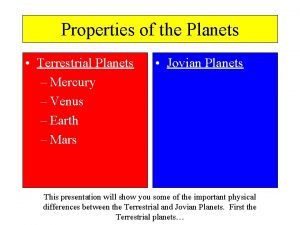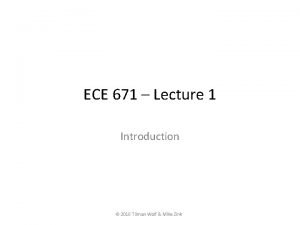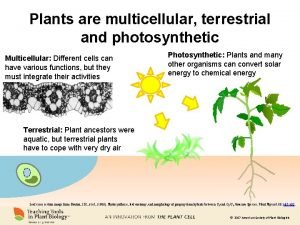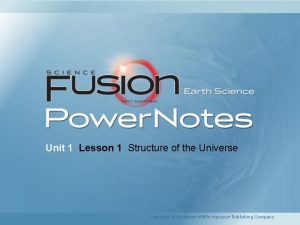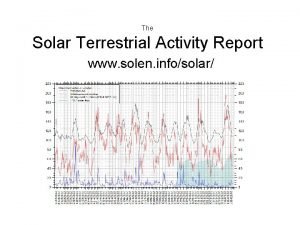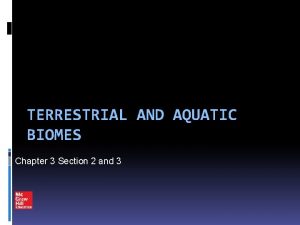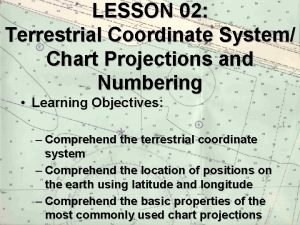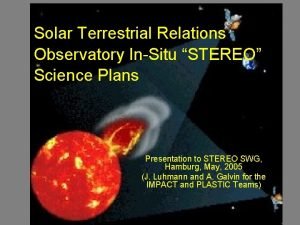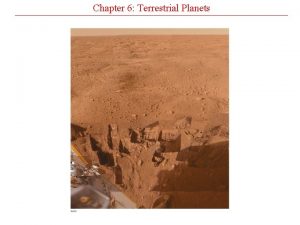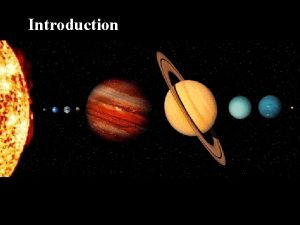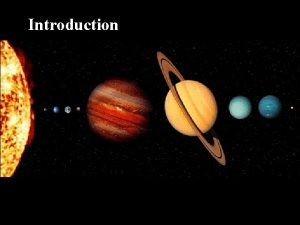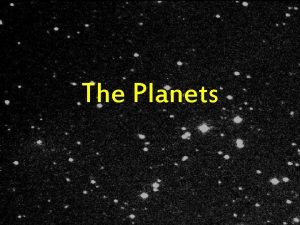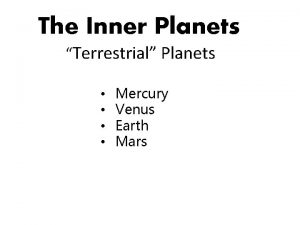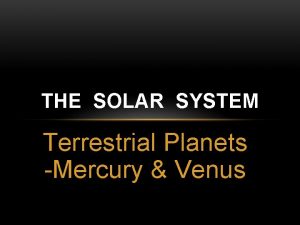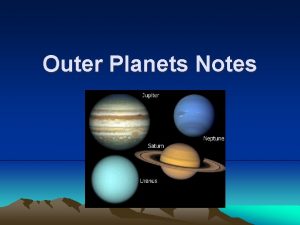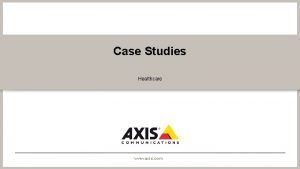Structure and Evolution of Terrestrial Planets Tilman Spohn





























- Slides: 29

Structure and Evolution of Terrestrial Planets Tilman Spohn

Mars Jupiter Ganymede Chemical Components: Gas (H, He), Ice (NH 3, CH 4, H 2 O), Rock/Iron 2

Interior Structure n Interior Structure models aim at n the bulk chemistry of the planet n the masses of major chemical reservoirs n the depths to chemical discontinuities and phase transition boundaries the variation with depth of thermodynamic state variables (r, P, T) n 3 Mars

Interior Structure n Constraints n n n n Future: n n 4 Mass Moment of inertia factor Gravity field, Topography Rotation parameters Surface rock chemistry/ mineralogy Cosmochemical constraints Laboratory data Seismology! Heat flow MGS Gravity Field of Mars

Interior Structure: The Data Set n n n 5 Relevant data with satisfying accuracy are available only for Earth, Moon, and Mars Moon and Mars: Mass, Mo. I-factor, Samples, Surface Chemistry, Lunar seimology Venus: Small rotation rate does not allow to calculate Mo. I-factor from J 2 under the assumption of hydrostatic equilibrium Mercury: Mo. I from Peale‘s experiment Galilean Satellites: C 22 and, in some cases, C 20

Planetary Data 6

Moment-of-Inertia factor constraint Mo. I factor constrains mantle density if similar to bulk density and a highdensity core exists (e. g. , The Moon). core density if similar to bulk density and low-density outer shell exists (e. g. , Mercury). The mantle density of Mars is relatively well determined by the planet's Mo. I factor. 7

New Mars Model Larger Cores, Thicker Crusts (both a few 10 s of km) Slightly Lighter Mantle 8 Sohl, Schubert and Spohn, 2005

Seismology, the method of choice n 9 With the help of seismology the ambiguity of the models can be removed and the state of the core can be determined

Breadboard model 10

Interior Structure 11

Structures Form Early Kleine et al, 2002 12 Breuer and Spohn, 2003

Internal Oceans n n n 13 The icy satellites Europa, Ganymede, Callisto, Titan, Triton, . . . May have internal oceans Competition between heat transfer and heating rates Melting point gradient

14

Liquid Cores? Solid Inner Cores? 15

Magnetism n n n 16 Of the terrestrial planets and major satellites, Earth, Mercury, and Ganymede are known to have self-generated magnetic fields Mars, Venus, Moon, Io, Europa, and Callisto lack self-generated magnetic fields Magnetic fields are generally thought to be enigmatic to planetary evolution during which thermal (and potential energy) is converted into mechanical work and magnetic field energy.

Magnetic Field, the Environment and Life n n Protects life against cosmic radiation Protects the atmosphere against erosion n 17 (Not all forms of erosion, of course)

Magnetic Field History of Mars § No present-day dynamo § Strong magnetisation of oldest parts of the Martian crust § No magnetisation of large impact basins Þ Dynamo action before the large impacts ~4 Ga 18 `The Great Nothing`

From 400 km height… 19

Second Short Episode of Dynamo Action? Lillis et al. 2005 20

Dynamos n Necessary conditions for existence n n n 21 An electrically conducting fluid Motion in that fluid Cowling‘s Theorem requires some helicity in the fluid motion

Dynamos n Hydromagnetic dynamos n n n 22 Driven by thermal bouyancy Driven by chemical bouyancy Thermoelectric dynamo G. Glatzmeier‘s Dynamo model for Earth

Thermal Dynamo § Fluid motion in the liquid iron core due to thermal buoyancy (=> cooling from above) § ‘Critical‘ heat flow out of the core 23

Chemical Dynamo § Existence of light alloying elements in the core like S, O, Si § Core temperature between solidus and liquidus 24

Eutectic 25

Style of Convection n Plate Tectonics (PT) Lithosphere Delamination (LD) Stagnant Lid (SL) n 26 Differ in „efficiency at cooling“, with PT being the most efficient, SL the least.

Thermal Evolution of the Core 27 Breuer and Spohn, 2003

Evolution of the Earth‘s Magnetic Field Thermal 28 Chemical Stevenson et al. , 1983

Planetary Magnetism n n 29 Earth: Plate Tectonics cools core efficiently. Dynamo driven by chemical convection Mars, Moon, Venus: Single Plate Tectonics allows early thermally driven dynamo Mercury: Thin mantle cools core effciently. Dynamo driven by chemical convection Ganymede: This is a puzzling case. Core may be young
 How are terrestrial planets different from jovian planets?
How are terrestrial planets different from jovian planets? Rocky planet surface
Rocky planet surface What are the inner and outer planets
What are the inner and outer planets Inner terrestrial planets
Inner terrestrial planets What is a terrestrial planet
What is a terrestrial planet What separates the inner and outer planets?
What separates the inner and outer planets? What is each planet made of
What is each planet made of The four outer planets
The four outer planets Tilman
Tilman Tilman wolf
Tilman wolf Photosynthetic multicellular and terrestrial kingdom
Photosynthetic multicellular and terrestrial kingdom Frog life cycle
Frog life cycle Structure and evolution of the universe. lesson 1
Structure and evolution of the universe. lesson 1 Solar terrestrial activity report
Solar terrestrial activity report Is venus terrestrial or gaseous
Is venus terrestrial or gaseous Biome
Biome Chapter 3 section 2 terrestrial biomes
Chapter 3 section 2 terrestrial biomes What is terrestrial navigation
What is terrestrial navigation Terrestrial soil
Terrestrial soil What are biomes defined by
What are biomes defined by Terrestrial coordinate system
Terrestrial coordinate system Food web analysis worksheet
Food web analysis worksheet Sample food chains
Sample food chains ห่วงโซ่ อาหาร
ห่วงโซ่ อาหาร Human impact on terrestrial ecosystems
Human impact on terrestrial ecosystems Terrestrial biomes summary chart
Terrestrial biomes summary chart Terrestrial food production systems
Terrestrial food production systems Solar terrestrial relations observatory
Solar terrestrial relations observatory Terrestrial plant
Terrestrial plant Terrestrial habitat
Terrestrial habitat




